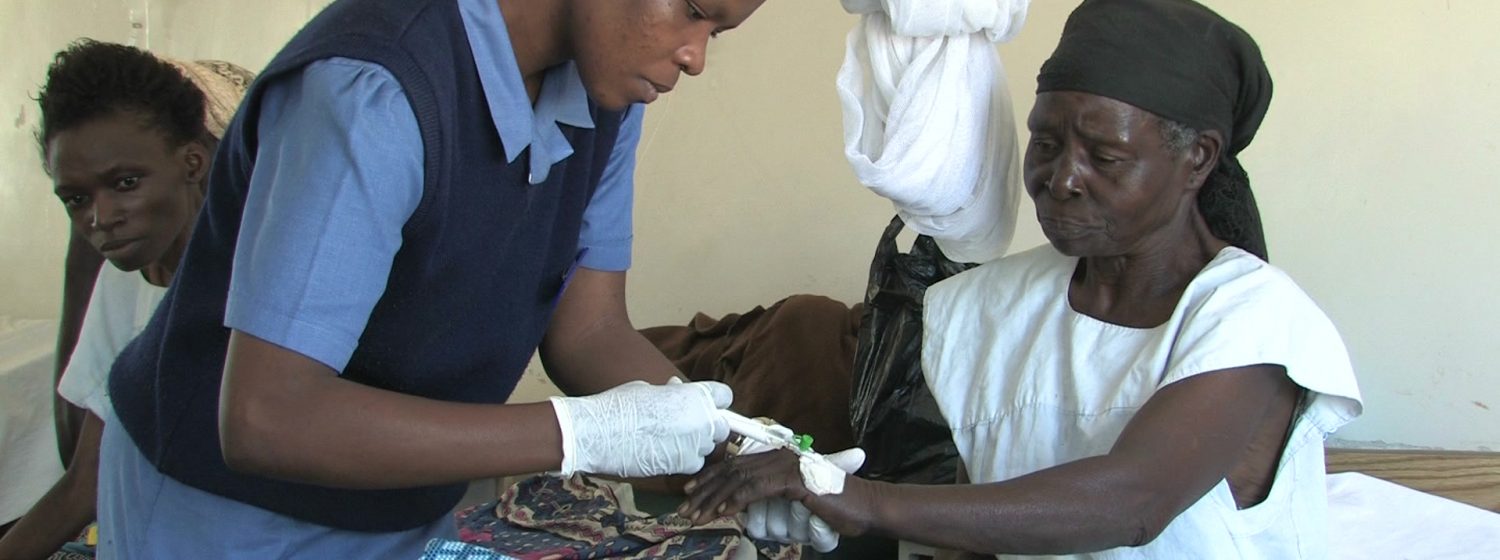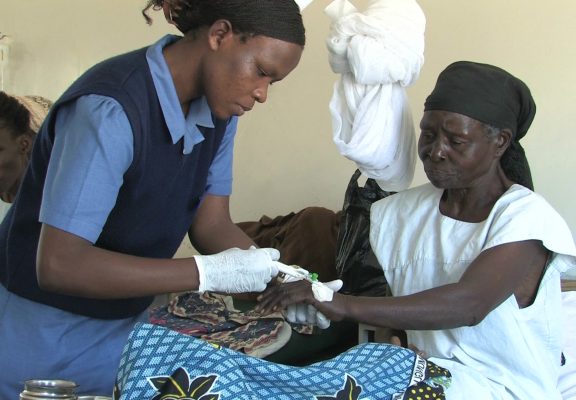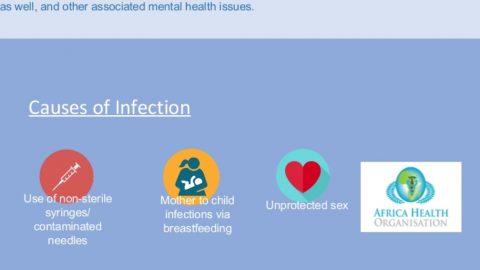Individuals can reduce the risk of HIV infection by limiting exposure to risk factors. Key approaches for HIV prevention, which are often used in combination, include:
1. Male and female condom use
Correct and consistent use of male and female condoms during vaginal or anal penetration can protect against the spread of sexually transmitted infections, including HIV. Evidence shows that male latex condoms have an 85% or greater protective effect against HIV and other sexually transmitted infections (STIs).
2. Testing and counselling for HIV and STIs
Testing for HIV and other STIs is strongly advised for all people exposed to any of the risk factors. This way people learn of their own infection status and access necessary prevention and treatment services without delay. AHO also recommends offering testing for partners or couples. Additionally, AHO is recommending assisted partner notification approaches so that people with HIV receive support to inform their partners either on their own, or with the help of health care providers.
3. Testing and counselling, linkages to tuberculosis care
Tuberculosis (TB) is the most common presenting illness and cause of death among people with HIV. It is fatal if undetected or untreated and is the leading cause of death among people with HIV- responsible for 1 of every 3 HIV-associated deaths. Early detection of TB and prompt linkage to TB treatment and ART can prevent these deaths. TB screening should be offered routinely at HIV care services. Individuals who are diagnosed with HIV and active TB should be urgently started on TB treatment and ART. TB preventive therapy should be offered to people with HIV who do not have active TB.
4. Voluntary medical male circumcision
Medical male circumcision, when safely provided by well-trained health professionals, reduces the risk of heterosexually acquired HIV infection in men by approximately 60%. This is a key intervention supported in 14 countries in Eastern and Southern Africa with high HIV prevalence and low male circumcision rates.
5. Antiretroviral (ARV) drug use for prevention
5.1 Prevention benefits of ART
A 2011 trial has confirmed if an HIV-positive person adheres to an effective ART regimen, the risk of transmitting the virus to their uninfected sexual partner can be reduced by 96%. The AHO recommendation to initiate ART in all people living with HIV will contribute significantly to reducing HIV transmission.
5.2 Pre-exposure prophylaxis (PrEP) for HIV-negative partner
Oral PrEP of HIV is the daily use of ARV drugs by HIV-uninfected people to block the acquisition of HIV. More than 10 randomized controlled studies have demonstrated the effectiveness of PrEP in reducing HIV transmission among a range of populations including serodiscordant heterosexual couples (where one partner is infected and the other is not), men who have sex with men, transgender women, high-risk heterosexual couples, and people who inject drugs.
AHO recommends PrEP as a prevention choice for people at substantial risk of HIV infection as part of combination prevention approaches.
5.3 Post-exposure prophylaxis for HIV (PEP)
Post-exposure prophylaxis (PEP) is the use of ARV drugs within 72 hours of exposure to HIV in order to prevent infection. PEP includes counselling, first aid care, HIV testing, and administering of a 28-day course of ARV drugs with follow-up care. WHO recommendsPEP use for both occupational and non-occupational exposures and for adults and children.
6. Harm reduction for injecting drug users
People who inject drugs can take precautions against becoming infected with HIV by using sterile injecting equipment, including needles and syringes, for each injection and not sharing other drug using equipment and drug solutions. A comprehensive package of interventions for HIV prevention and treatment includes:
- needle and syringe programmes;
- opioid substitution therapy for people dependent on opioids and other evidence based drug dependence treatment;
- HIV testing and counselling;
- risk-reduction information and education;
- HIV treatment and care;
- access to condoms; and
- management of STIs, tuberculosis and viral hepatitis.
7. Elimination of mother-to-child transmission of HIV (EMTCT)
The transmission of HIV from an HIV-positive mother to her child during pregnancy, labour, delivery or breastfeeding is called vertical or mother-to-child transmission (MTCT). In the absence of any interventions during these stages, rates of HIV transmission from mother-to-child can be between 15-45%. MTCT can be nearly fully prevented if both the mother and the child are provided with ARV drugs throughout the stages when infection could occur.
AHO recommends options for prevention of MTCT (PMTCT), which includes providing ARVs to mothers and infants during pregnancy, labour and the post-natal period, and offering life-long treatment to HIV-positive pregnant women regardless of their CD4 count.
In 2015, 77% (69–86%) of the estimated 1.4 (1.3-1.6) million pregnant women living with HIV globally received effective ARV drugs to avoid transmission to their children. A growing number of countries are achieving very low rates of MTCT and some (Armenia, Belarus, Cuba and Thailand) have been formally validated for elimination of MTCT of HIV. Several countries with a high burden of HIV infection are closing in on that goal.





